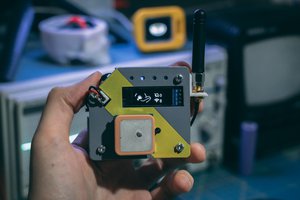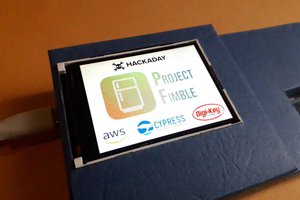🌟 About the Project
Our creation is a versatile gadget that combines the power of the ESP32 microcontroller, the visual appeal of an ST7735 TFT LCD screen, and the convenience of microswitches for easy navigation. This multifaceted device is designed to assist network administrators, security enthusiasts, and IoT developers in understanding and managing wireless networks.

🧰 Getting Started
• TFT LCD ST7735
The ST7735 TFT LCD is the visual gateway to your gadget's capabilities. Its vibrant display provides real-time feedback and enables user interaction. With a resolution of X by Y, it ensures that information is presented clearly and intuitively.
• ESP32 Microcontroller
The ESP32 microcontroller is the brains behind the operation. Its built-in Wi-Fi and Bluetooth capabilities make it the ideal choice for this project. It handles the various functions, communicates with the TFT LCD, and manages user input through micro switches.
• Micro Switches
Navigation is made easy thanks to the inclusion of micro switches. These tactile buttons allow users to move through menus, select functions, and interact with the gadget effortlessly.
🔌Schematic
Before you begin assembling your gadget, it's essential to understand the connections between the components. The table below outlines the connections between the ESP32, ST7735 TFT LCD, and micro switches
🎯 Core Functions
Now, let's delve into the core functions of your gadget:

• Packet Monitoring
the packet monitor allows you to receive the packets and surveillance the specific chosen channel. The Packet Monitoring function leverages the ESP32's Wi-Fi capabilities to capture and analyze wireless packets. in promiscuous mode, enabling it to monitor all nearby Wi-Fi traffic. The information gathered is then displayed on the TFT LCD screen in real time.

• Wi-Fi Scanning
The Wi-Fi Scanning function detects and lists nearby access points. You'll utilize the ESP32's scanning functions to retrieve information about SSIDs, signal strengths, channels and security protocols. This valuable data is presented to the user for network selection.

• Beacon Spamming
in this section, by choosing the desired channel you can create and spam fake Wi-Fi access points. Beacon Spamming involves crafting and broadcasting fake beacon frames. This function is for educational purposes, allowing users to understand how networks announce their presence.

• Deauth Detection
Implement de-authentication detection by monitoring the network for deauth packets. all channels will be scanned for any de-authentication attack and will display the amount of detected packets for every channel. When detected, trigger the buzzer and LED to alert the user.
👀 Use Cases
Explore practical use cases for your gadget:
Network Troubleshooting: Use the packet monitoring and Wi-Fi scanning functions to troubleshoot network issues, identify interference, and optimize Wi-Fi performance.
Ethical Hacking Practice: Beacon spamming and deauth detection can be used for educational purposes in learning about network security and ethical hacking techniques.
Security Audits: Offer your gadget as a tool for security professionals to perform security audits on wireless networks.
IoT Projects: Extend the capabilities of your gadget by integrating it into IoT projects where wireless network monitoring is essential.
.
🙌 Special Thanks to Our Sponsor: PCBWay
No project is complete without the right tools and materials. That's where our sponsor, PCBWay, stepped in to provide essential support for this project. PCBWay is a leading provider of high-quality printed circuit boards (PCBs) and PCB assembly services.
Website: PCBWay Official Website
.
.
Code
If you’re interested in building this project on your own, the code is available on GitHub. Simply go to the GitHub repository, and download the code.
GitHub repository: github.com/cifertech/ESP32-DIV
 CiferTech
CiferTech



 zst123
zst123
 Roman V
Roman V
 Wei Wang
Wei Wang
Yeeeeeuck, this isn't a project it's an advertisement.